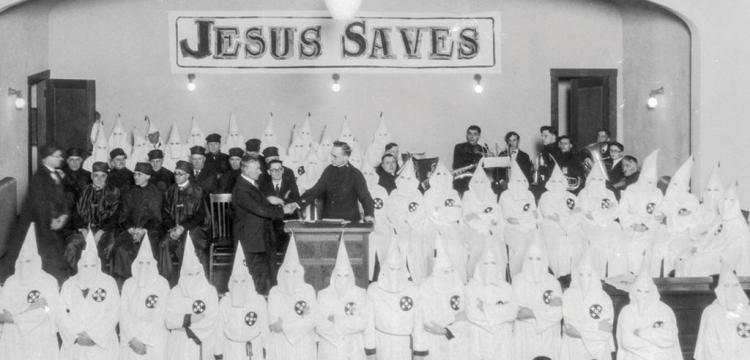As we point out elsewhere on this site (See Looking Back, Looking Ahead: Racial Differences in Time Frames), there are many important differences in the ways White people and people of color view race. For example, many White people look back at the past and think about how far we’ve come. Many people of color look toward the future, to a time when we will have reached racial parity, and think about how very far we have to go (Eibach and Erlinger, 2006).
Beyond that, from what I’ve observed, White people and people of color also view the past differently. People of color, quite naturally, are horrified by the past. They take it personally, and often re-live it vicariously through family stories. White people, to the extent they think about it at all, have a distant, muted response. Most White people express a dispassionate disapproval, a tut-tutting, if you will, about events they perceive as . . well . . unfortunate. They think about slavery and the racial terror that followed rather like they think about old-time medical practices, like using leeches to suck blood from sick people—ill-advised, certainly, but unworthy of serious reflection, and unrelated to life today.

What would it take, then, for White people to acknowledge the violent, brutal, racist exploitation at the very heart of colonialism in the U.S. and around the world? (See Race = Racism.) Prof. James Q. Whitman of Yale Law School has one answer to that question. In Hitler’s American Model: The United States and the Making of Nazi Race Law, Whitman argues that as the Nazis were developing the Nuremberg Laws in the 1930s (the first steps toward formalizing discrimination against Jews), they were inspired by the many useful ideas they found in U.S. history, law, and social practice.
It’s become all too common for people to compare their political opponents to Nazis, and many such assertions are histrionic and overblown. But Whitman (a mainstream scholar, and certainly no radical) makes a reasoned and cogent case He cites the minutes of the Nuremberg meetings themselves, and notes the number of times the U.S. is held up in those discussions as a role model for how governments can institutionalize racism.
Whitman argues that we have downplayed the U.S. as a model of Nazi practice for two reasons. One is that it’s simply too horrific to contemplate[1]. The other is that our contemporary understanding of race in U.S. history is limited almost exclusively to Jim Crow laws and the segregation of public facilities. (See The Black History Month Story.) The Nazis decided against that particular kind of segregation, so it’s been difficult for us to see how their practices mirrored ours. (Astonishingly, Whitman points out that when the Nazis decided not to follow U.S. precedent, it’s because they considered our policies too extreme.)
There are a number of ways Whitman says the Nazis were inspired by racism in the U.S. Here are four:
Native genocide: Germany in the 1930s felt hemmed in, desiring more land for industry, agriculture, and national security. They looked east to Poland, Czechoslovakia, and other weaker nations as territory to conquer. Just as “Manifest Destiny” was the White American justification to move west across North America, stealing Native land and slaughtering Native people, Germany was looking for a rationale to confiscate land in Eastern Europe. They found U.S. justifications for territorial expansion very helpful.

Race-based immigration policies: Prior to the Civil War, numerous states in the Northeast, Midwest and Northwest passed laws aimed at keeping Black people, including free Black people, from moving up from the South. California outlawed Chinese immigration, and the federal government followed suit with the Chinese Exclusion Act of 1882. Additional bills designed to restrict immigration to White people were passed in 1896, 1917, 1921, and especially, 1924, which also limited immigration from Southern and Eastern Europe. We offered many precedents for Germany to follow. A century later, there are plenty of people–including people in significant positions of power–who want to return to immigration policies fueled in large part by a vision of a “racially pure” America.
Anti-miscegenation laws: The U.S. was especially helpful here: the Nuremberg participants noted that they could find no other nation in the world with laws against marrying someone from another racial, ethnic, or cultural group. Of course, that requires categorizing everyone by race. This is one of the times the Nazis found some U.S. laws too extreme, rejecting our “one-drop rule” as they wrote their definition of a Jew, choosing instead to define a Jew as anyone with one or more Jewish grandparent.[2]
Second-class citizenship status: As they perused U.S. law, the Nazis found numerous models for making some people second-class citizens, most especially the disenfranchisement of African Americans from nearly every aspect of political and social life. In addition, Native Americans were ‘nationals,’ but not citizens until 1924, and Filipinos and Puerto Ricans, who were colonized by the U.S. after the Spanish-American War, and thereafter considered ‘foreign in a domestic sense.’ The Nazis followed the U.S. example by declaring that only a person of “German blood” (specifically excluding Jews) could be citizens.

If, like many White Americans, you believe that racism ended with the abolition of slavery, consider this: not so long ago (during the lifetime of my parents), Germany used the laws, policies, and practices of the U.S. as a model for the creation of the Nazi state. Are we better than that today? Of course. But before we take too much comfort in the progress we’ve made, let’s tell the truth about the horrors of the past, and resolve not to be satisfied by being less awful than that.
[1] Except for far-right White supremacists, who intuitively understand the connection between U.S. history and Nazi policy better than the rest of us.
[2] Even after the end of World War II, in 1947, former Mississippi Sen. Theodore Bilbo published a book entitled Separation or Mongrelization: Take Your Choice. The book is still available on amazon.com and has this text on the cover: “This book is a S.O.S. call to every White man and White woman not only within the U.S.A but also throughout the rest of the world. It is also a warning to every thinking non-European who has any respect for his racial integrity.” As of July 12, 2017, it had received seven reviews in the last five years, two negative, one neutral, and four very positive.


